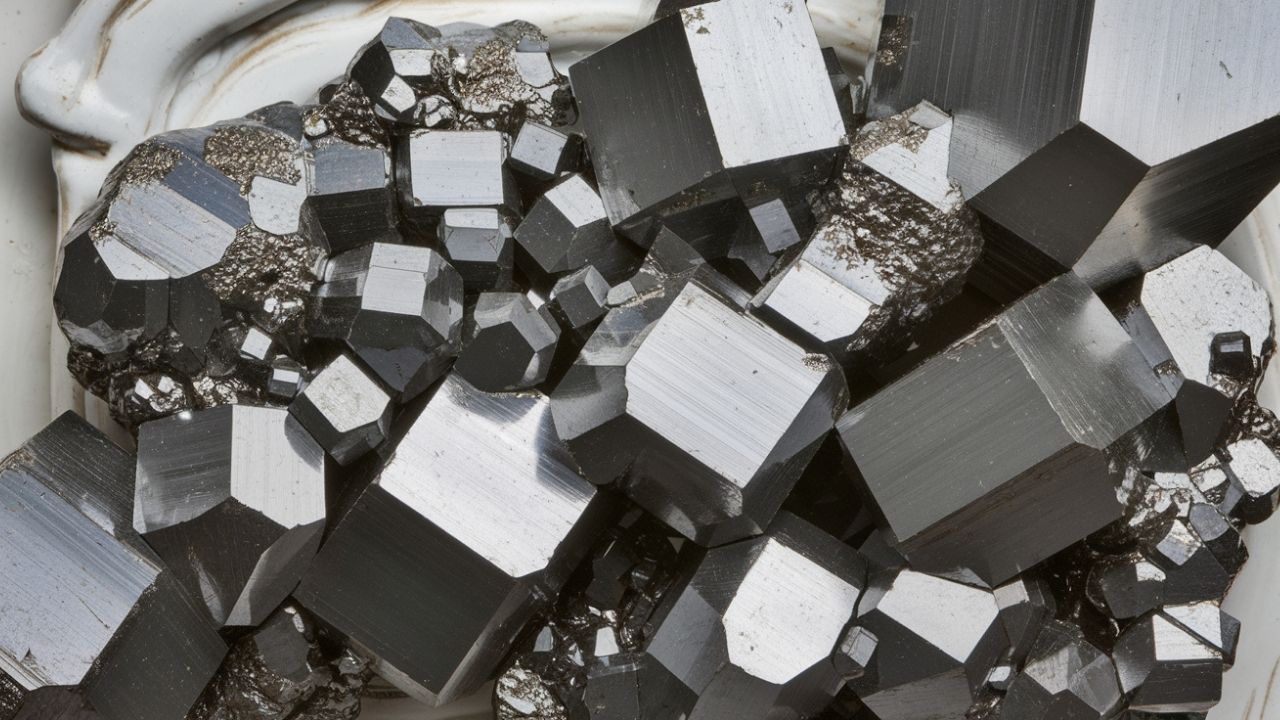
Lead(II) sulfide is a fascinating compound with a rich history and a variety of uses. Known for its deep black color, this mineral, also called galena, has been mined for thousands of years. Lead(II) sulfide is not just a pretty face; it plays a crucial role in modern technology. From ancient cosmetics to cutting-edge infrared detectors, this compound has seen it all. Did you know that galena is the primary ore of lead? Or that it was used in early radio sets? Whether you're a science enthusiast or just curious, these 30 facts about lead(II) sulfide will surprise and inform you. Buckle up for a journey through time and technology!
Key Takeaways:
- Lead(II) sulfide, or galena, is a mineral with historical significance and diverse uses, from ancient cosmetics to modern solar cells. However, its toxicity and environmental impact require careful handling and regulation.
- Understanding the properties and impacts of lead(II) sulfide is crucial for its safe and effective use, from its physical and chemical properties to its environmental and health implications. Balancing its benefits with its risks is essential for responsible utilization.
What is Lead(II) Sulfide?
Lead(II) sulfide, also known as galena, is a naturally occurring mineral. It has been used for centuries in various applications. Here are some fascinating facts about this compound.
- Chemical Formula: The chemical formula for lead(II) sulfide is PbS.
- Appearance: It typically appears as a metallic, lead-gray or silver-gray mineral.
- Crystal Structure: Lead(II) sulfide crystallizes in the cubic crystal system.
- Natural Occurrence: Galena is the most important ore of lead and is found in hydrothermal veins.
- Historical Use: Ancient Egyptians used galena as kohl, a cosmetic for darkening eyelids.
Physical Properties of Lead(II) Sulfide
Understanding the physical properties of lead(II) sulfide helps in identifying and utilizing it effectively.
- Density: It has a high density of about 7.6 g/cm³.
- Hardness: On the Mohs scale, its hardness ranges from 2.5 to 2.75.
- Melting Point: The melting point of PbS is approximately 1114°C (2037°F).
- Electrical Conductivity: Lead(II) sulfide is a semiconductor, making it useful in electronic applications.
- Luster: It exhibits a metallic luster, which makes it visually distinctive.
Chemical Properties of Lead(II) Sulfide
The chemical properties of lead(II) sulfide reveal its reactivity and potential uses in various industries.
- Solubility: PbS is insoluble in water but can dissolve in acids.
- Reaction with Oxygen: When heated in the presence of oxygen, it forms lead(II) oxide and sulfur dioxide.
- Reaction with Acids: It reacts with hydrochloric acid to produce hydrogen sulfide gas.
- Stability: Lead(II) sulfide is stable under normal conditions but can oxidize over time.
- Toxicity: PbS is toxic if ingested or inhaled, requiring careful handling.
Uses of Lead(II) Sulfide
Lead(II) sulfide has various applications due to its unique properties.
- Lead Production: It is the primary source of lead extraction.
- Photodetectors: PbS is used in infrared photodetectors for its semiconductor properties.
- Pigments: Historically, it has been used as a pigment in paints and cosmetics.
- Thermoelectric Materials: It is explored for use in thermoelectric materials to convert heat into electricity.
- Solar Cells: Research is ongoing to use PbS in next-generation solar cells.
Environmental and Health Impacts
The extraction and use of lead(II) sulfide have significant environmental and health implications.
- Mining Impact: Mining galena can lead to soil and water contamination with lead.
- Air Pollution: Smelting PbS releases sulfur dioxide, contributing to air pollution.
- Health Risks: Exposure to lead from PbS can cause serious health issues, including neurological damage.
- Regulations: Strict regulations govern the handling and disposal of lead(II) sulfide to minimize risks.
- Recycling: Efforts are being made to recycle lead from PbS to reduce environmental impact.
Interesting Facts About Lead(II) Sulfide
Here are some lesser-known yet intriguing facts about lead(II) sulfide.
- Ancient Uses: Apart from cosmetics, ancient civilizations used galena in pottery glazes.
- Geological Indicator: The presence of galena can indicate the potential for other valuable minerals.
- Optical Properties: PbS has unique optical properties, making it useful in certain types of lenses.
- Cultural Significance: In some cultures, galena was believed to have protective properties.
- Modern Research: Scientists are studying PbS nanoparticles for potential medical applications, including cancer treatment.
The Final Word on Lead(II) Sulfide
Lead(II) sulfide, or PbS, isn't just a compound; it's a gateway to understanding chemistry and technology. From its natural occurrence as galena to its role in infrared sensors and photovoltaic cells, PbS has left a significant mark. Its unique properties, like high refractive index and semiconducting abilities, make it invaluable in various fields. However, handling PbS requires caution due to its toxicity. Proper safety measures ensure that we can harness its benefits without risking health. Whether you're a student, a scientist, or just curious, knowing these facts about lead(II) sulfide enriches your knowledge of the material world. Keep exploring, stay curious, and remember, every element and compound has a story to tell.
Frequently Asked Questions
Was this page helpful?
Our commitment to delivering trustworthy and engaging content is at the heart of what we do. Each fact on our site is contributed by real users like you, bringing a wealth of diverse insights and information. To ensure the highest standards of accuracy and reliability, our dedicated editors meticulously review each submission. This process guarantees that the facts we share are not only fascinating but also credible. Trust in our commitment to quality and authenticity as you explore and learn with us.
